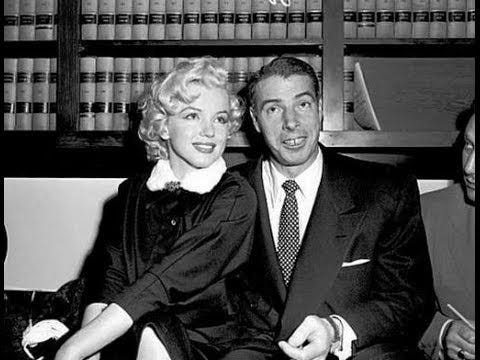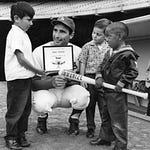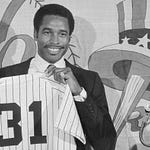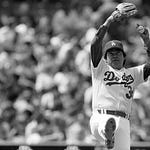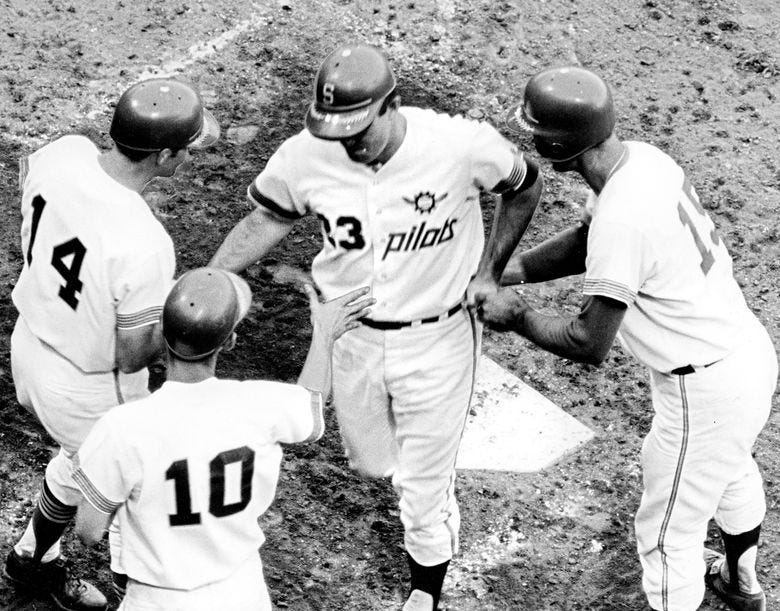
March 31, 1968: Seattle Names its First Expansion Franchise
On March 31, 1968, Seattle’s brand-new American League expansion franchise officially became the Pilots. It was a nod to the city’s nautical and aviation roots—home to both a major port and the aerospace company Boeing.
The name came with a clean navy-and-gold color scheme and one of the better logos of the era: a ship’s wheel encircling a baseball. The team’s president, Dewey Soriano, announced the name just one day before Opening Day 1968... but there was just one problem: the team wouldn’t actually take the field for another year.
Seattle had been promised a major league team as part of a settlement after the city sued the American League for backing out of an earlier expansion pledge. But the Pilots were rushed into existence without a proper stadium.
Sick’s Stadium, a minor league park from the 1930s, was hastily renovated—and that’s putting it nicely. Seating was inadequate, plumbing failed on hot days, and by the time Opening Day 1969 arrived, only about 18,000 seats were ready.
The Pilots lasted exactly one season before bankruptcy forced them into a hasty relocation. In April 1970, they were reborn as the Milwaukee Brewers. It’s the shortest-lived expansion franchise in MLB history—and maybe the best example of what happens when ambition outruns infrastructure.
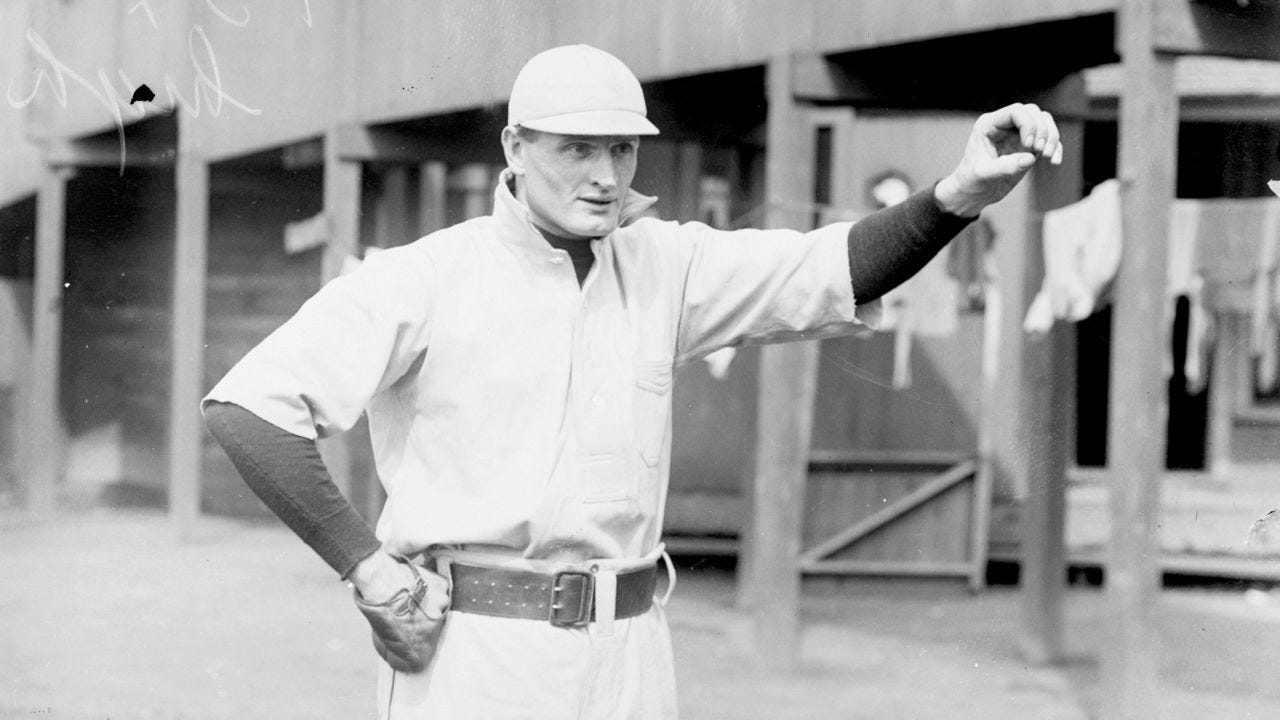
April 1, 1914: A Future Hall of Famer Dies After a Good Deed
One of baseball’s most unforgettable characters, Rube Waddell, died at just 37 years old in a sanitarium in San Antonio, Texas. The cause was tuberculosis—though the disease was likely accelerated by a selfless act months earlier.
During the winter of 1912-13, Waddell had waded waist-deep into freezing waters in Hickman, Kentucky, helping to stack sandbags and save a town from flooding. He never fully recovered, and his health spiraled in the months that followed. The game lost more than a pitcher that day. It lost a legend.
Waddell was a lefty with a fastball and a screwball that baffled hitters in the early 1900s. He led the majors in strikeouts six straight years from 1902 to 1907 and finished his career with 2,316 Ks—at a time when most pitchers weren’t missing bats like that.
He won 193 games, pitched a no-hitter, and once struck out 16 batters in a game without a glove on his non-pitching hand. Off the field, he was a wild mix of genius and chaos. He’d leave the dugout to chase fire trucks mid-game, was once distracted by puppies in the stands, and occasionally disappeared between starts to go wrestling alligators in the offseason.
But on the mound, he was ahead of his time. Waddell was posthumously inducted into the Hall of Fame in 1946, where he belongs—not just for the stats, but for the legend he left behind.
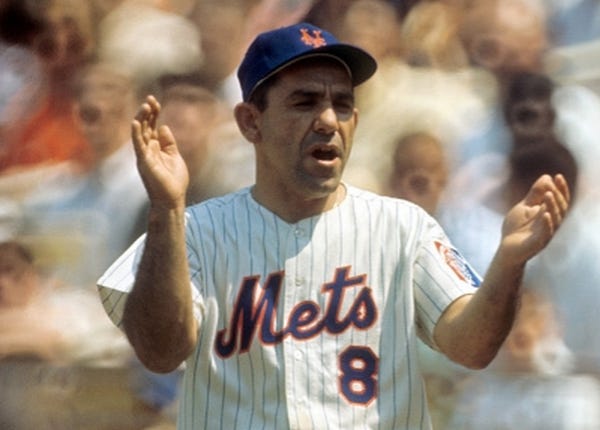
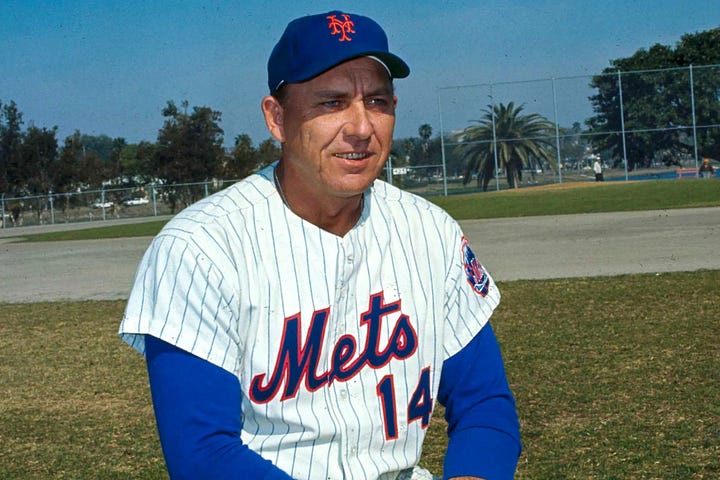
April 2, 1972: A Mid-Season Death Prompts a Manager Change for the Mets
Gil Hodges was walking back to his motel room in West Palm Beach when he collapsed from a massive heart attack. It was two days before his 48th birthday—and just days before Opening Day.
He had been managing the Mets since 1968, and just three seasons earlier had guided them to one of the most improbable championships in baseball history: the 1969 “Miracle Mets.”
The franchise was never the same after he arrived. His death shocked the baseball world, and even more so the Mets clubhouse. Hodges wasn’t just a manager—he was a calm, commanding presence who had taken a laughingstock and turned it into a winner.
In the wake of the tragedy, the Mets didn’t have to look far. Yogi Berra, who had been serving as a coach under Hodges, was promoted to manager. It was a full-circle moment: Berra had been a beloved figure in New York for decades, first as a Hall of Fame catcher with the Yankees, then as a brief manager in the Bronx.
Now, he was being asked to steer the Mets through grief and into a new chapter. Hodges’ sudden death also renewed conversations about his Hall of Fame candidacy—he’d hit 370 home runs as a player, won three Gold Gloves, and was a key part of the Dodgers’ Brooklyn dynasty. He wouldn’t be inducted until 2022, fifty years after his passing.
April 3, 1998: José Valentín’s Hat Trick in South Florida
If you were flipping through box scores on this day in ’98, you might’ve blinked twice at the Brewers-Marlins line. Milwaukee shortstop José Valentín went deep three times in one game, single-handedly carrying the Brewers to a 7–1 win in Miami.
It wasn’t just a hot night—it was the only three-homer game of Valentín’s career and the kind of performance that gets your name etched in franchise memory.
Valentín’s bombs came off three different pitchers and accounted for five RBIs. The switch-hitting infielder was known for his pop, topping 20 homers in multiple seasons, but this was peak José.
And it wasn’t just a solo effort—this game kicked off a solid campaign for him, finishing 1998 with 24 homers and 85 RBIs. Not bad for a guy who was mostly known for his glove when he broke in.
April 4, 1974: Hank Aaron Ties Babe Ruth
Opening Day in Cincinnati felt more like a coronation. Hank Aaron—sitting on 713 home runs—stepped into the box in the first inning and, with a swing that had become both familiar and fearsome, launched one into the left-field seats off Reds pitcher Jack Billingham. Just like that, history was tied.
It was Aaron’s 714th career home run, equaling Babe Ruth’s once-untouchable mark. The crowd, the press, even his teammates seemed to hold their breath. Hammerin’ Hank was 40 years old and still delivering missiles. He would break the record four days later in Atlanta, but this was the swing that proved he belonged right beside the Bambino—and soon, above him.
April 5, 2012: The Longest Opening Day Game Ever
When the Blue Jays and Indians opened the 2012 season, no one expected to settle in for a marathon. But five hours and 14 minutes later, Toronto finally walked off with a 7–4 win in 16 innings—setting the record for the longest Opening Day game in Major League history.
Cleveland had a 4–1 lead heading into the ninth, but a blown save from closer Chris Perez let Toronto tie it. The bullpens got stretched thin, bats went cold, and fans either left the park or settled in for the long haul.
J.P. Arencibia played hero, hitting a three-run bomb in the 16th to end it. The game featured 16 pitchers, 24 strikeouts, and about 30,000 groggy fans wondering if baseball was always going to be this exhausting.
April 6, 1992: Camden Yards Opens in Style
The Orioles ushered in a new era of Major League Baseball by opening Oriole Park at Camden Yards. It was the first game ever played at the retro-style ballpark, built on the site of an old railroad hub just blocks from Babe Ruth’s birthplace.
The O’s didn’t disappoint—Rick Sutcliffe threw a complete game shutout, and Cal Ripken Jr. went 3-for-5 with a solo homer, helping the Orioles defeat the Cleveland Indians 2–0 in front of 44,568 fans. For a team entering the '90s looking to find its footing again, it was a perfect start in their new home.
But Camden Yards wasn’t just about baseball nostalgia—it redefined what a stadium could be. Its brick facade, asymmetrical dimensions, and skyline views sparked a revolution, inspiring parks like Coors Field, Petco Park, and Progressive Field. It proved fans didn’t need cookie-cutter stadiums with artificial turf and multi-use bleachers—they wanted charm, sightlines, and a sense of place.
Thirty years later, it’s still considered one of the crown jewels of Major League Baseball. As Cal Ripken put it that day, “It felt like home the moment you stepped on the field.”
State of the Show Update : April 2025 (Premium Subs Only)
Listen to this episode with a 7-day free trial
Subscribe to Rounders: A History of Baseball in America to listen to this post and get 7 days of free access to the full post archives.







